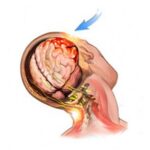Kansas City Crash Lawyer, Douglas R. Horn appeared on KC Live on March 10, 2014 with a proposed solution to the distracted driving epidemic. Distracted driving has become America’s highest driving safety priority. With the increasing number of drivers that are multi-tasking behind the wheel, Horn said the problem will get worse, before better.
While much attention is given to tragedy associated with high-profile teen texting while driving fatalities, adults now represent the largest segment of distracted drivers. Since the introduction of the smart phone, many driving experts point to a significant decline in the driving culture as many drivers treat driving as a secondary activity.
It is fair to state that the current solutions, including anti-texting laws, are not having the impact experts had hoped for. Horn believes the only viable solution is to change the driving culture. “We need to get to the point where using a cell phone while driving is socially unacceptable, much like impaired driving. We need to push toward that end, then we will be steps ahead in changing the driving culture” Horn stated.
Horn believes there are 3 primary steps to making cultural change in the driving activity. First, driving safety must be kept high of the public agenda, and at the top of driver consciousness. Second, we need to target driving safety messages to all drivers, not just a certain class of drivers. Finally, and most important, real cultural change begins with higher standards. Drivers need to be reminded that it is their responsibility to exercise the highest degree of care when driving.
Horn, who developed the Drive By Example driver safety program, is working to make Kansas City a model city for driving safety. Horn has created “driving safety partnerships, including with KSHB-TV and the Metropolitan Community Colleges, to help in his vision to create a better quality of life in Kansas City. Horn is hopeful that he can enhance and enlarge driving safety partnerships, especially in the corporate sector.





